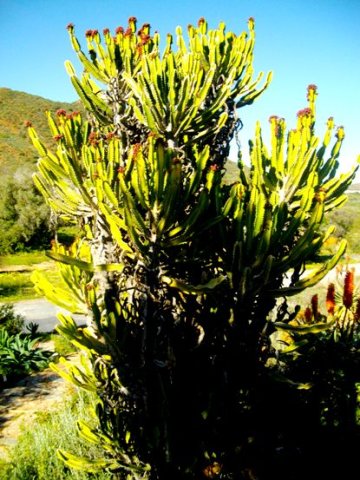Euphorbia triangularis

Author: Ivan Lätti
Photographer: Thabo Maphisa
Euphorbia triangularis, the river euphorbia, is a large, candelabra-shaped tree that grows to 18 m tall (SA Tree List No. 356). The trunk is almost cylindrical with slight indications of angularity. The main branches all develop separate rounded crowns of young, green branchlets, the tree sometimes much-branched.
The branches are three-angled as the name indicates, but occasionally four- or five-angled branchlets are also found. Young branchlets are yellow-green with slightly wavy or curved edges. A sometimes continuous horny rim has spaced groups of slender, yet vicious divergent spines; on other specimens the spine cluster cushions are discrete.
The periodic constrictions between stem sections may be more or less pronounced, possibly related to weather conditions in times when the stems were formed.
The species distribution is mainly near the east coast in the Eastern Cape and KwaZulu-Natal, also in the Mpumalanga Lowveld and some tropical countries in East Africa.
The habitat is river banks and coastal areas. The species is not considered threatened in habitat early in the twenty first century (Frandsen, 2017; Smith, et al, 2017; Coates Palgrave, 2002; iNaturalist; www.kumbulanursery.co.za; http://redlist.sanbi.org).

